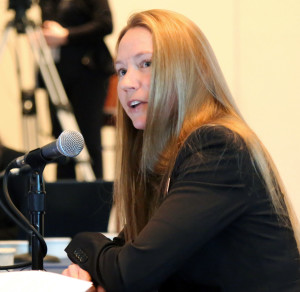Idaho’s public charter schools governed by the Public Charter School Commission are far less diverse than Idaho’s traditional public schools, according to an annual report presented to the State Board of Education Thursday.
The Public Charter School Commission (PCSC) is Idaho’s largest authorizer of charters, with a portfolio of 36 schools, or 72 percent of Idaho charters. About 16,000 students attend PCSC schools; an additional 4,220 students attend public charters governed by school districts.

The study — praised by board members for its honesty and thoroughness —found a lack of diversity in charter schools. Students with limited English skills and special needs are underrepresented; the same goes for low-income students and ethnic minority students. A year ago, the commission’s annual report acknowledged similar demographic gaps.
“The entire charter school movement is concerned about demographics and one big cause is messaging to the community,’’ said Tamara Baysinger, director of the Public Charter School Commission. “There is a broad perception (charters) are private schools but they are not. Access seems to be an issue.”
The report emphasized the PCSC has doubled its efforts to urge charters to provide student transportation and food service, locate schools in diverse communities and tailor recruitment efforts to reach all demographic groups.
“The PCSC encourages the entire public charter school community to join in an effort to ensure that all students – regardless of language, ethnicity, economic status, or special needs – feel welcome to enroll and are assured of receiving high quality services at any Idaho public charter school,” the report said.
Here are demographic statistics from charter commission schools:
- Eighty-nine percent serve a lower percentage of special needs students than their surrounding districts.
- Ethnic minority students are underrepresented in 94 percent of charter schools; in 79 percent of these schools, the difference exceeds 3 percentage points.
- Eighty-three percent enroll no students with Limited English Proficiency (LEP) skills — making it the most underrepresented group in charter schools.
- In 66 percent of charter schools, the percentage of students who qualify for free and reduced-price lunch is at least 3 percentage points lower than the surrounding districts.
State law requires public charter schools to provide equal opportunity to all students, regardless of ethnicity or special needs.
“Some of our schools are good at moving students out of special need programs so their percentage will be low, but that’s not the case in every situation,” Baysinger said.
Baysinger also told board members schoolwide academic performance data is not available since the state’s star rating system was put on hold three years ago. She did share ISAT (math and English language arts proficiency) and SAT data in her report.
“Schools are doing quite well operationally,” she said.
Click here for a link to the full report, including data on all commissioned charter schools and comparisons to surrounding districts and state results.
